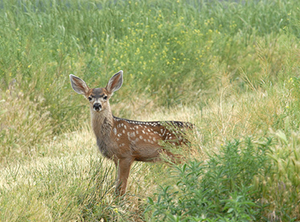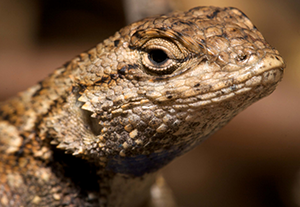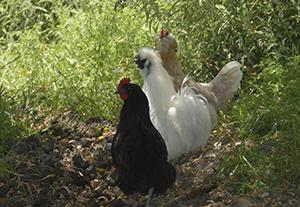 Blacklegged ticks, both the Western and Eastern varieties, are often known as “deer ticks” … Does that mean deer are to blame for the spread of Lyme disease?
Blacklegged ticks, both the Western and Eastern varieties, are often known as “deer ticks” … Does that mean deer are to blame for the spread of Lyme disease?
Perhaps surprisingly, the answer is not obvious. While deer are a common host animal for the ticks (and can carry as many as 1000 ticks per animal!), they do not support the Lyme-causing spirochete (Borrelia burgdorferi bacteria). Ticks can feed, reside, and reproduce on deer but need to come into contact with the bacteria via another host before biting a human to spread Lyme disease. So, while there is a correlation between human Lyme cases and corresponding deer populations, it has more to do with the deer enabling the expansion of the tick population than the transmission of the bacteria. Mice and ground squirrels, both of which are common hosts for both ticks and the bacteria, are much more likely to bring infected ticks into human contact (…just in case you were looking for another reason to avoid rodents!)
There are a lot of intriguing facts and misperceptions about which animals do or don’t contribute to Lyme risk. And more research is being done to evaluate exactly which layers of the food chain have the greatest impact in the proliferation or containment of the ticks and the bacteria. Here’s what we know now…
 Hosts that inhibit the spread of Lyme disease:
Hosts that inhibit the spread of Lyme disease:
- Opossums: Opossums eat or remove most ticks and have an immune system that is fairly effective at fighting the disease so those ticks that survive a visit with an opossum are less likely to acquire the Lyme-causing bacteria.
- Foxes: Foxes are predators of the small mammals that serve as the predominant carriers of the Lyme bacteria hence “where foxes thrive, Lyme generally does not.”
- Western Fence Lizards: Scientific evidence suggests that these lizards have the ability to actively destroy the Borrelia bacteria, essentially making them “neutralizers” against Lyme disease! More work is being done to investigate potential applications for human treatments.
 Chickens & guinea hens: Among the few species to prey on ticks, both chickens and guinea fowl help reduce adult tick populations but have been shown to be less interested in the smaller nymphal ticks that are prominent carriers of the Lyme bacteria. They also tend to lure coyotes and other predators (see below) making their net impact unclear.
Chickens & guinea hens: Among the few species to prey on ticks, both chickens and guinea fowl help reduce adult tick populations but have been shown to be less interested in the smaller nymphal ticks that are prominent carriers of the Lyme bacteria. They also tend to lure coyotes and other predators (see below) making their net impact unclear.
Animals that may be more to blame…
- Mice, particularly the white-footed mouse: This mouse is the primary carrier of ticks and Lyme disease on the east coast. Note: most wild mammals, mice and squirrels included, do not evidence symptoms of the disease but also do not inhibit the vitality of the bacteria.
 Grey squirrels: Grey squirrels are the number one carrier of blacklegged ticks and the Lyme bacteria West of the Rockies.
Grey squirrels: Grey squirrels are the number one carrier of blacklegged ticks and the Lyme bacteria West of the Rockies.
- Birds: Birds do not show signs of infection but are carriers for both the ticks and the Lyme-causing bacteria. They are of concern primarily because of the distances they travel, allowing for the spread of Lyme from one area to another.
- Coyotes: Because coyotes tend to prey on foxes and because they tend to disperse less densely than foxes, where coyotes are found, there is often a higher concentration of the smaller mammals that do carry the disease (e.g., mice and squirrels) creating a positive correlation between coyote populations and the incidence of Lyme.
- Dogs, horses, and even cattle can all get Lyme disease and will show symptoms including lameness. Pets too. These animals are also common carriers of the ticks and in close proximity to humans so ready transport for the infected ticks.